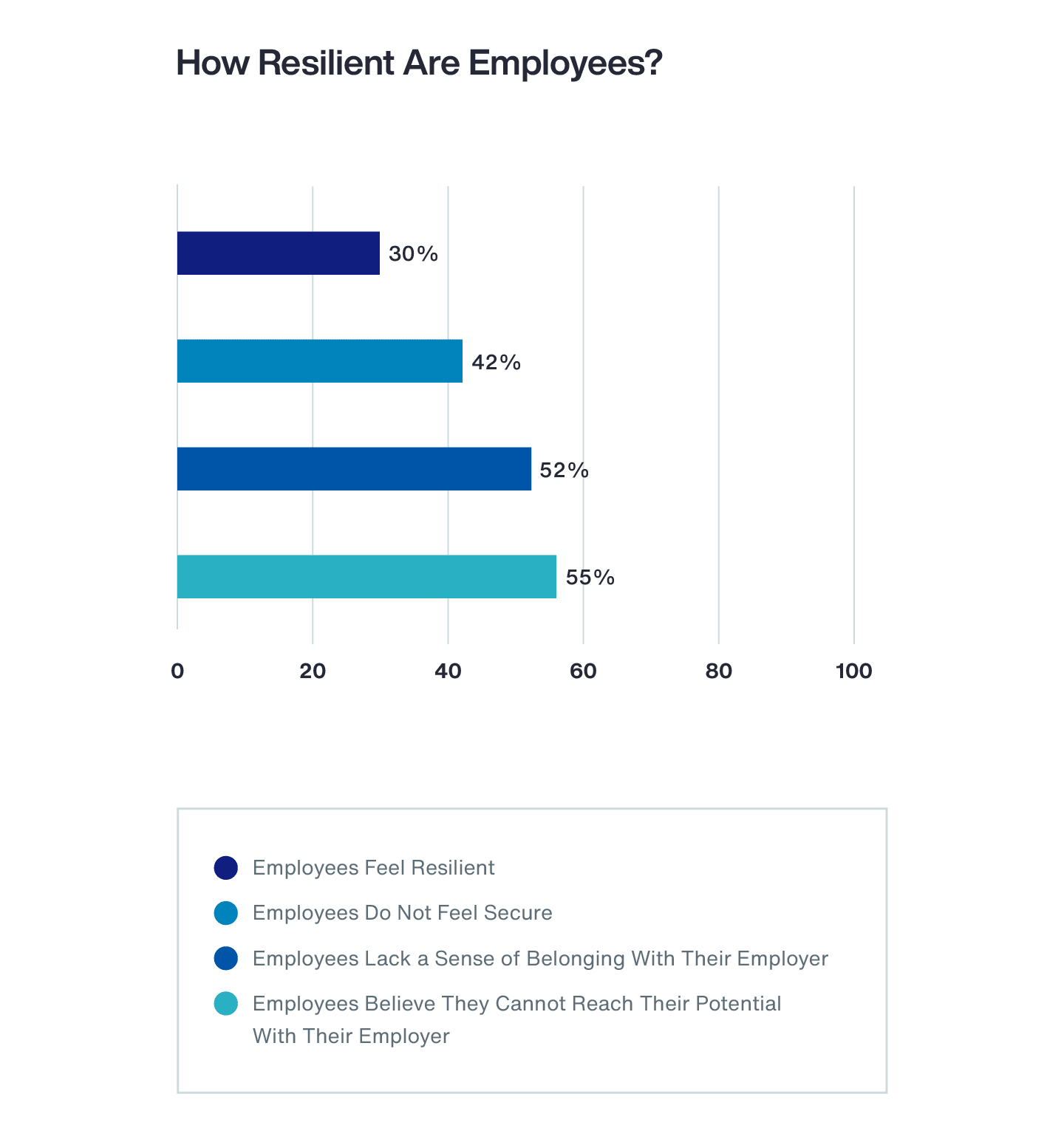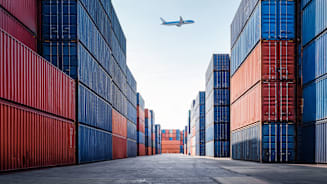Managing Resilience
Armed with a thorough understanding of the business landscape and high-quality workforce data, businesses will then have a better idea of where to target their workforce resilience efforts.
To promote better financial resilience, for instance, businesses could offer flexible benefits by allowing employees to create a package that suits them. Important follow-on questions include:
- What employee programs are in place to address challenges such as mental health issues and physical health concerns like obesity, cancer and diabetes?
- How does the business’s employee value proposition (EVP) match up to the expectations of current and prospective employees?
- Is there a strategic workforce planning process in place, including a skills program? How is it being managed?
- Is there an increased focus on Diversity, Equity and Inclusion (DE&I)?
If an employer looks out for its employees and treats them fairly, then employees are more likely to stay and thrive.
Qualifying and Mapping (Future) Skills
Aon recently helped a major telecommunications provider identify a need to promote better career mobility – which is a key component of workforce resilience – the employees who know they have several career paths open to them, and feel that their skills are being valued and utilized are likely be more resilient. We found that the requisite skills and competencies already existed within the organization, but there was not enough internal mobility to make the most of that potential.
The answer lay in guiding employees toward greater self-insight by helping them understand their motivations and capabilities, as well as encouraging them to be open to potential career moves in other areas.
Skills mapping adds to the equation by identifying future skills required by the business. It can also uncover an overlap between, for example, accountants and business controllers. Exercises like these can open unorthodox career journeys for employees.
Workforce Resilience Initiatives: Not Just for the Good Times
Ultimately, developing workforce resilience is an ongoing process. TMC businesses that achieve long-term success are those that consistently invest in workforce resilience throughout the economic cycle. It’s easy when times are good, but many cut back when times are harder. If anything, that is when workforce resilience becomes more critical than ever, playing a central role in promoting wider operational resilience.









































































































































































































































































































































































































